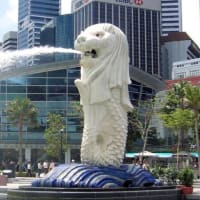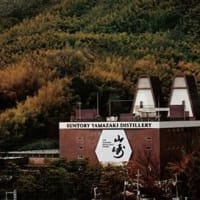
== 承前 ==
In interviews and public statements, some current and former government officials have admitted that Japanese authorities engaged in a pattern of withholding damaging information and denying facts of the nuclear disaster — in order, some of them said, to limit the size of costly and disruptive evacuations in land-scarce Japan and to avoid public questioning of the politically powerful nuclear industry. As the nuclear plant continues to release radiation, some of which has slipped into the nation’s food supply, public anger is growing at what many here see as an official campaign to play down the scope of the accident and the potential health risks.
インタビューでの談話や彼等が公表した文書を通じて、日本政府の現在または元の職員の中には、被害情報の隠蔽と核関連の災害の否定は日本の当局者の習い性であると認める論者もおられる。而して、日本の当局者はなぜそんなことを仕勝ちになるのかと言えば、それは、利用可能な土地が限られている日本の場合、かつ、政治的に強い影響力を持っている原子力発電の業界に対する批判が澎湃と起こることのないように、費用の嵩む避難措置の規模を低めに抑えること、そして、避難にともなう政治的と社会的な混乱を低めに抑えるためだということだ。けれども、福島の原子力発電所からは日々放射性物質が放出され続けており、これにより、日本国内の食品の幾らかは放射能に汚染されてしまっている。ことほど左様に、国民の怒りは激化する一方である。すなわち、福島の原子力発電所の事故、および、潜在的な健康被害の危険性の重大さを過小評価しようとする民主党政権による情報誘導の一方で、自分の生活空間の中で人々が実際にその目で見たことに対する怒りは拡大しつつあるのだ。
Seiki Soramoto, a lawmaker and former nuclear engineer to whom Prime Minister Naoto Kan turned for advice during the crisis, blamed the government for withholding forecasts from the computer system, known as the System for Prediction of Environmental Emergency Dose Information, or Speedi.
“In the end, it was the prime minister’s office that hid the Speedi data,” he said. “Because they didn’t have the knowledge to know what the data meant, and thus they did not know what to say to the public, they thought only of their own safety, and decided it was easier just not to announce it.”
【小澤一郎氏に近い、民主党衆議院議員の】空本誠喜氏は、この福島の原子力発電所を巡る当初の危機の際に菅直人首相もその助言を頼りにした、原子力発電所関連の技術者だった経歴を持つ人物だけれど、一般には、緊急時環境線量情報予測システム(緊急時迅速放射能影響予測ネットワークシステム)、通称、Speediと呼ばれる、件の放出される放射能の拡散の度合と範囲を予想するコンピューターシステムの予報情報を民主党政権が隠蔽したことを非難している。空本氏曰く、
「白黒はっきり言わせていただければ、結局、Speediの情報を隠匿したのは首相官邸ですよ」「要は、首相官邸は、Speediの情報が何を意味しているのかを知るための知識を持ち合わせていなかった。よって、当然ながら、公衆に向けて何を伝えればいいのか分からなかった。ゆえに、菅直人首相と首相官邸スタッフは、自分達の保身のことしか頭になく、ということで、何も公表しないに如くはないと、そう考えたのですよ」、と。

People from Namie
In an interview, Goshi Hosono, the minister in charge of the nuclear crisis, dismissed accusations that political considerations had delayed the release of the early Speedi data. He said that they were not disclosed because they were incomplete and inaccurate, and that he was presented with the data for the first time only on March 23.
“And on that day, we made them public,” said Mr. Hosono, who was one of the prime minister’s closest advisers in the early days of the crisis before being named nuclear disaster minister. “As for before that, I myself am not sure. In the days before that, which were a matter of life and death for Japan as a nation, I wasn’t taking part in what was happening with Speedi.”
原発事故担当大臣の細野豪志氏は、Speediの情報が事故が起きた初期の段階で公表されなかったのは民主党政権内部の政治的な忖度によるものだという批判をインタビューの中で否定している。Speediの情報の公表が遅れたのは、Speediの情報が正確ではなく精確でもなかったからであり、細野氏自身、Speediの情報を最初に提供されたのはやっと3月23日になってからである、と【←嘘つけ!!】。
「而して、その3月23日に民主党政権はSpeediの情報を公表した」と、原発事故担当大臣に任命される以前も、福島における原発事故勃発の初期から菅首相の側近の補佐官の一人であった細野氏はそう述べている。「3月23日以前のことに関しては、Speediの情報がどういう扱いであったのか私自身定かではありません。それ以前の日々は、日本自体の国家としての浮沈がかかっている出来事が起きていたのであり、また、Speediの情報を巡ってどんなことが起きているのか私自身関与していなかったのですから」【←おい、「政治主導」はどこ行った!!】とも。
The computer forecasts were among many pieces of information the authorities initially withheld from the public.
Meltdowns at three of Fukushima Daiichi’s six reactors went officially unacknowledged for months. In one of the most damning admissions, nuclear regulators said in early June that inspectors had found tellurium 132, which experts call telltale evidence of reactor meltdowns, a day after the tsunami — but did not tell the public for nearly three months. For months after the disaster, the government flip-flopped on the level of radiation permissible on school grounds, causing continuing confusion and anguish about the safety of schoolchildren here in Fukushima. ・・・
原発事故に対処するべき当局の専門家達が当初公衆の目から隠蔽していたこのSpeediの情報は、多くの細切れの情報断片の集積ではある。
福島第一原子力発電所の6基の原子炉の内の3基でメルトダウンが惹起した事実は数ヵ月間公表されなかった。最も重大な結果を意味する事実の中には、核施設の監査に当たる担当者が6月上旬に、なんと【2011年3月11日午後2時46分の】東日本大震災による津波襲来の翌日【3月12日】には、テルル132という物質が検知されていたことである。而して、テルル132こそ核物理学と原子炉工学の専門家の仲間内では、原子炉でメルトダウンが惹起したことの動かぬ証拠として知られている物質なのだ。しかし、この動かぬ証拠が発見されたという情報は三ヵ月近くも秘匿されたままだったのである。東日本大震災から何ヵ月も経ってから、民主党政権は、学校の校庭に関する放射線許容値の水準を突然変更した。この民主党政権の思いつき的な措置によって、ここ福島県では、学齢期の子供達に及ぼす放射線の危険性を巡って混乱と心労が引き起こされているのだ。(後略)




















